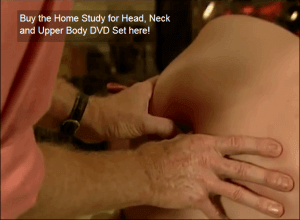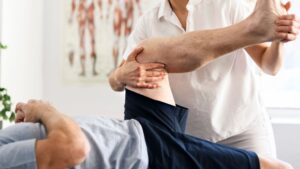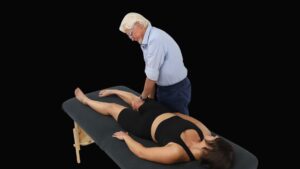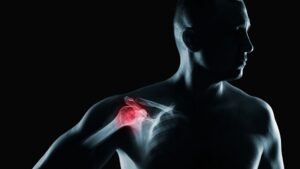If you have trained with Erik Dalton, the creator of Myoskeletal Alignment Techniques (MAT), whether in a live workshop or via one of his online or home-study medical massage training programs, then you may know that the client’s “head and tail” can play an important role in delivering an effective session. Here, the word head refers to the upper cervical complex, and the word tail refers to the sacral base. According to Dalton, one of the main goals of myoskeletal alignment is to level the sacral base and the occiput. Dalton’s colleague, Paul Kelly, calls the relationship between the head and the tail a “brother-sister relationship,” and encourages practitioners to consistently aim for a level head and tail at the end of the session, as this alone can yield great results for the client. However, before you begin working toward this goal with your own clients, be sure you have the proper MAT training.
Receiving the necessary continuing education to perform powerfully effective MAT moves, such as the leveling of the occiput and the sacral base, is crucial for a safe and successful practice. Dalton has earned a reputation as a leading educator in the arena of orthopedic massage because he not only teaches his students how to apply these techniques in a way that’s easy to understand, but also because he provides practitioners with a greater understanding of what’s actually going on “behind the scenes” of various client issues and conditions. With a firmer, more global grasp on the potential underlying mechanisms of a client’s complaint, the manual therapist can be better prepared to address the issue effectively. Given the fact that a large number of clients who seek MAT practitioners are dealing with a condition that involves pain, effectively addressing that issue typically means helping to manage or remove their pain.
Medical Massage Training on Optimal Head, Pelvis Positioning
When it comes to leveling the head and the tail, one of the things that may be going on “behind the scenes” is that the MAT practitioner is attempting to address abnormal neuromuscular righting reflexes. According to Dalton, healthy head righting reflexes — the body’s reflexive attempt to keep the eyes level against the horizon — rely on an aligned pelvis, a springy ribcage and a stable, flexible cervical spine. The MAT creator reports that positioning the head, pelvis and spinal cord optimally helps streamline nerve impulses and reflexes moving to and from the brain. By setting out to level the head and tail through manual therapy, MAT aims to normalize the electrical activity of the body’s neuromuscular righting reflexes. The reason a practitioner may wish to seek medical massage training in order to perform these techniques is because a misaligned head or tail can cause abnormal righting reflexes, which, in turn, can result in protective muscle guarding and associated joint dysfunction.

In his continuing education classes like Home Study for Head, Neck and Upper Body, Dalton teaches massage therapists, bodyworkers and other professional manual therapists how to perform the proper assessments and subsequent alignment techniques for leveling the head and the tail and relieving reflexive muscle spasm. Given that abnormal righting reflexives appear to trigger neck and pelvic muscle spasticity, the importance of using MAT to bring the head and tail back into healthy alignment cannot be overstated. For instance, if the reflexive spasm changes ilium and sacrum alignment, the central nervous system may end up generating a cascade of compensations from the ribcage to the shoulders to the neck, which only exacerbates the body’s struggle to keep the eyes level with the horizon. In MAT training, the manual therapist will learn to level the head and tail within a single session, and how to retest this alignment in subsequent visits. In addition, the practitioner will be taught to evaluate whether the client may be unintentionally contributing to the problem with his or her posture and movement patterns — and, if so, how to stop adding to the issue.
Medical Massage Training From Home
If your goal is to move your practice toward or further into the lucrative and rewarding arena of clinical massage, then the highest quality medical massage training should be a top priority. For a list of available MAT CE home-study programs and online training courses, visit www.erikdalton.com.









